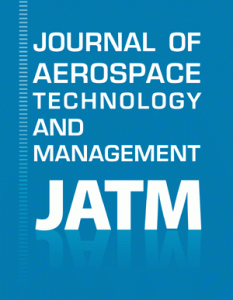By Julliane Silveira, scientific journalist, São José dos Campos, SP, Brazil
Information on atmospheric parameters, such as pressure, temperature, relative humidity, wind, among others, are crucial for a variety of day-to-day activities, from agriculture to airport operation, as all of them depends on data to predict rainfall or the occurrence of more severe events.
In Brazil, this information is captured and transmitted mainly by radiosonde, a battery-powered telemetry instrument carried into the atmosphere usually by a weather balloon that measures various atmospheric parameters and transmits them by radio to a ground receiver. The use of radiosonde in large areas, however, is expensive and complex: it is necessary to have a lot of devices in many places and at different times to get enough and precise information.
Therefore, professionals and researchers look for alternatives and one of them is the use of microwave radiometers. Microwave radiometers measure emitted microwave radiation, expressed in terms of brightness temperature, for vertical or horizontal polarization and, then, can indicate the presence of water in the atmosphere and temperature values at various altitudes. It is cheaper and has high temporal resolution, when compared to radiosondes.
These equipments are the subject of the article “Ground-based microwave radiometer calibration: an overview”, published in the current issue of JATM (Journal of Aerospace Technology and Management, vol. 10), by researchers from CEMADEN (Brazilian National Center for Monitoring and Warnings of Natural Disasters).
 Figure 1 – Set-up for the calibration of the microwave radiometer
Figure 1 – Set-up for the calibration of the microwave radiometer
The radio-sensing of the microwave radiation of the atmosphere using ground-based radiometers has been highly efficient in a range of applications such as meteorology, weather forecast, nowcasting, telecommunications, astronomy, satellite and radar validation data, and so on (MIACCI, et al., 2015; WESTWATER; CREWELL; MÄTZLER, 2004). These results have also contributed to the development and enhancements of radiative transfer models for clear and cloudy sky conditions.
“Our research points to the efficiency of using a microwave radiometer and that the absolute calibration of the equipment is a vital factor for its correct functioning” explains Marcelo Miacci and Carlos Angelis, authors of the study.
Microwave radiometry is a field where researchers and the radiometer manufacturers are constantly providing promising results for the enhancement of brightness temperature measurements and retrieval of atmospheric profiles, along with other calibration techniques that have been applied, such as the tipping curve (HAN; WESTWATER 2000) and even improvements in computational techniques.
References
HAN, Y. and WESTWATER. E.R. Analysis and improvement of tipping calibration for ground-based microwave radiometers. IEEE Trans Geoscience and Remote Sensing [online]. 2000, vol. 38, no. 3, pp. 1260-1276, ISSN: 0196-2892 [viewed 6 September 2018]. DOI: 10.1109/36.843018. Available from: https://ieeexplore.ieee.org/document/843018/
MIACCI, M.A.S., et al. Some considerations on the cryogenic calibration technique for microwave and millimeter wave ground-based radiometry. Revista de Gestão & Tecnologia. 2015, vol. 3, no. 3, pp. 47-52, e-ISSN: 2177-6652 [viewed 6 September 2018]. Available from: http://www.revista.unisal.br/lo/index.php/reget/issue/view/27
WESTWATER, E.R., CREWELL, S. and MÄTZLER, C.A. Review of surface-based microwave and millimeter-wave radiometric remote sensing of the troposphere. The Radio Science Bulletin [online]. 2004, no. 310, pp. 59-80, ISSN: 1024-4530 [viewed 6 September 2018]. DOI: 10.23919/URSIRSB.2004.7909438. Available from: http://www.ursi.org/files/RSBissues/RSB_310_2004_09.pdf
To read the article, access it
MIACCI, M. and ANGELIS, C.F. Ground-based microwave radiometer calibration: an overview. J. Aerosp. Technol. Manag. [online]. 2018, vol. 10, e3518, ISSN: 1984-9648 [viewed 6 September 2018]. DOI: 10.5028/jatm.v10.927. Available from: http://ref.scielo.org/fmswrp
External link
Journal of Aerospace Technology and Management – JATM: <http://www.scielo.br/jatm>
Como citar este post [ISO 690/2010]:

















Recent Comments